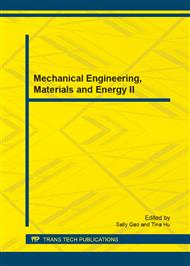p.682
p.688
p.692
p.696
p.700
p.704
p.710
p.715
p.719
Analysis of China’s CO2 Emission and Carbon Trading Potential
Abstract:
With the development of economy and technology, the world produces more and more greenhouse gases (GHGs), which result in global warming. The Kyoto Protocol signed in 1997, marked the resolution of human fighting global warming. The developed countries are committed to achieve their GHGs emission targets under the protocol, developing nations play similar roles on a voluntary way. However, recently Copenhagen, Cancun and Durban Climate Conference, didn’t reach an agreement of the post-Kyoto era, which cause an uncertain situation in the post-Kyoto era. Due to much of the GHGs come from energy sectors and China is the largest GHGs emission country in the world. It is worthwhile to review the Chinese energy situation. A carbon intensity decomposition model is used to analyze the influencing factors of the carbon intensity because the Chinese target is reducing 40%-45% carbon intensity in 2020 on the basis of 2005. Then this paper analyzes the potential of carbon trading potential in China. This paper comes to a conclusion that the influencing factors of the carbon intensity are mainly energy structure and energy intensity. Carbon trading market is a good choice for China because China has good potential in GHGs reduction in the energy sector and carbon trading market can help China realize the target in 2020.
Info:
Periodical:
Pages:
704-709
Citation:
Online since:
January 2013
Authors:
Price:
Сopyright:
© 2013 Trans Tech Publications Ltd. All Rights Reserved
Share:
Citation:


